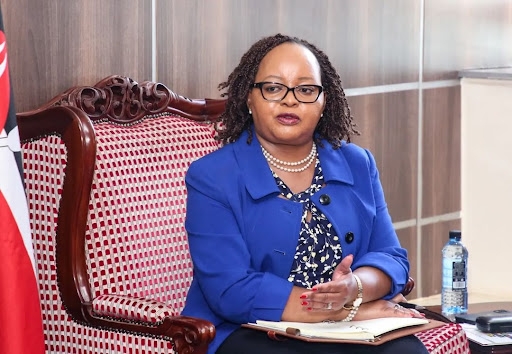Kunow Primary School in Balambala, Garissa, is planting own crops to solve food shortage problems.
They are also planting trees for their firewood which they share with the neighbouring communities.
This is as most parts of the country continue to come to terms with the harsh effects of the climate change such as prolonged droughts, little or no rainfall, high temperatures, food insecurity, among others.
Pastoralism continues to be unsustainable amid the climate change that continues to take a toll on residents.
Piles of animal carcasses strewn all over the roads have become common.
Most residents are now turning to irrigation farming to sustain their livelihoods.
Today, Garissa county has hundreds of farms producing tonnes of food crops from mangoes, rice, bananas, oranges to animal fodder, which has lifted the livelihoods of the farmers.
With proper support in marketing, training on technology and value addition, Garissa can be the next food basket in the country.
Unlike most schools in the county that rely on donors, well-wishers and government for support, Kunow is self-sufficient. A visit to the school tells a story of resilience and hard work.
The Star visited the school at the weekend to have a look at what the school has done and to share their story of resilience and the impact on the surrounding communities.
School's head teacher Mohamed Ali, who took journalists through the farms, said they had to come up with innovative ways to tackle climate change.
They have divided the farms into two parts, in one section they grow food crops and the other trees. They have planted around 250,000 gliricidia trees.
The school hopes to increase the number of trees to one million in the coming years in line with the government's initiative to boost tree cover in the country.
The government plans to grow 15 billion trees in the next 10 years at a cost of Sh600 billion.
The school uses the trees for their firewood needs. They cut the trees into small pieces, mix them with other materials such as sawdust before compressing them to make firewood.
“In the other farm, we normally grow food crops to sustain the learners we have here. This project was implemented by the National Council for Nomadic Education in Kenya (NACONEK) who has assisted us and engaged with the parents,” Ali said.
“For the parents to get incentives from this project, they have to bring their children to school. Due to this, and the engagement we have had with the parents, the population of this area has increased because a lot of people are coming to settle here,” he said.
The head teacher said that for the people in the surrounding communities to enjoy the fruits of the farms which include wood fuel and food for their livestock from the leaves of the Gliricidia plants.
The school is also giving out gliricidia plants to all the parents so that they can continue planting trees in their homes. Parents are also getting jikos and a sufuria from the school to encourage them.
The school has installed a solar-powered water pump to pump water from River Tana which is 6km away into their farms and that way they have been able to sustain the crops and trees to maturity.
“Having more of these model farms across all the ASALs will go a long way in ensuing that food security in these regions hard hit by famine is guaranteed,” he said.
National Drought Management Authority CEO Col (rtd) Hared Adan who also toured the institution applauded the school for the life-changing programme in the middle of recurring droughts in the county.
“What we are witnessing today is evidence that with water, anything is possible. We are covering a 75-acre farm with both trees and the food crops. The food crops go towards promoting food security within this area,” Adan said.
“We want to encourage the locals to plant trees in their homesteads. As NDMA, we will try to help the community by giving them the seedlings so that each homestead can plant at least five trees.”











